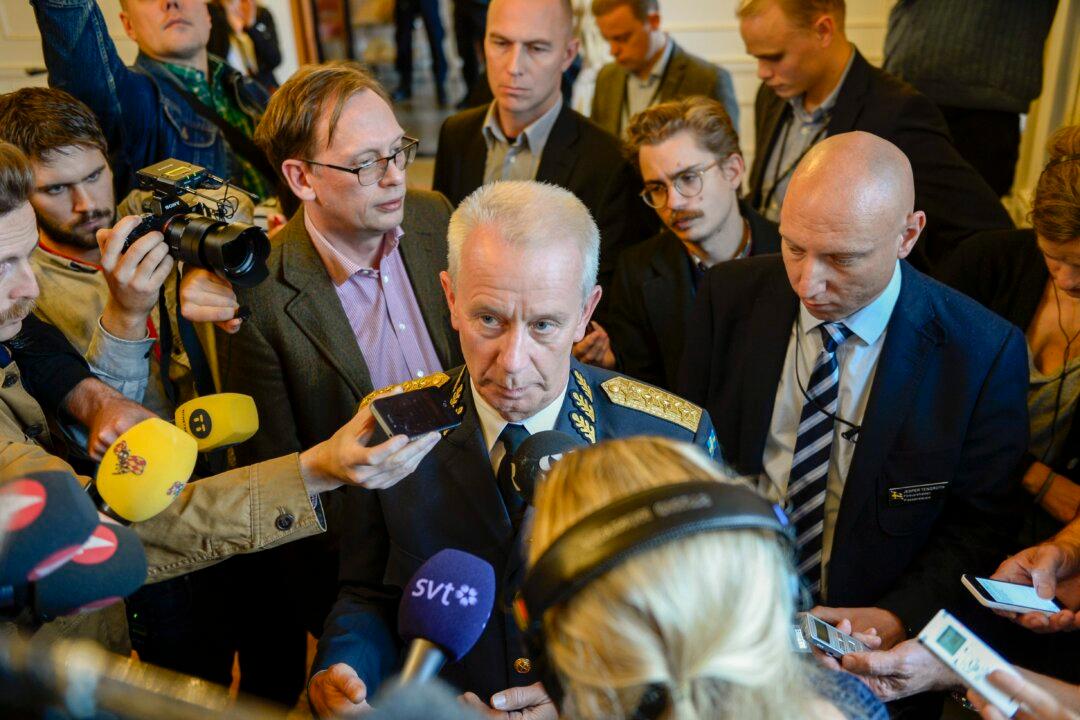STOCKHOLM—The search for a foreign underwater craft in waters off Stockholm has brought back memories of Sweden’s submarine hunts during the Cold War — and exposed a key difference.
Back then Sweden actually had a robust anti-submarine force.
Sweden, which is not a NATO member, has downsized its military significantly since the Iron Curtain fell and has scrapped some of the resources it used to hunt for Soviet submarines, including helicopters equipped with sonar and anti-submarine weapons.
“It’s been a while since we conducted this type of operation. ... We are a bit rusty,” Rear Adm. Anders Grenstad, chief of operations, told The Associated Press.
Earlier Tuesday he said the military had received reports of five sightings since the search started on Friday, but did not want to speculate on the type of vessel or object in question.
“What we are looking for is something or someone who violated Sweden’s territorial integrity. This is totally unacceptable,” Grenstad said.
Military officials haven’t blamed any country for the suspected intrusion, though most Swedish defense analysts say Russia would be a likely culprit.
Sweden built up an anti-submarine force after a Soviet sub with nuclear weapons ran aground off its southern shores in 1981 but started dismantling it as part of deep cuts in defense spending after the Cold War ended.
Experts questioned whether Sweden has the tools to find a submarine hiding among the thousands of islands and reefs that make up the Stockholm archipelago.
“The odds of us locating and taking action against a foreign underwater vessel is, due to the reduction of our capabilities and the complex environment in the littorals of the Baltic Sea, relatively small,” said retired navy Commander Christian Allerman, a task group chief in Sweden’s anti-submarine warfare force in the 1990s.
Sweden phased out its anti-submarine helicopters in 2008 and isn’t expecting replacements until 2018.
Apart from cutting defense spending, Sweden has shifted its focus from territorial defense to international peacekeeping operations and abolished conscription. In 2012 Sweden had 20,000 troops on active duty and 200,000 reserves, down from 50,000 active-duty personnel and almost 600,000 reserves in 1999, according to statistics from the Britain-based International Institute for Strategic Studies.
The center-left government that took power earlier this month has indicated it will boost defense spending following Russia’s intervention in Ukraine and stepped-up military activity in the Baltic Sea region.
“The Swedish defense needs to improve its capacity,” Swedish Prime Minister Stefan Lofven told reporters Tuesday during a visit to Lithuania. He cited Russia’s increasing military activity but added that “we do not regard that as an immediate threat to Sweden.”
From The Associated Press. Liudas Dapkus in Vilnius, Lithuania, and Matti Huuhtanen in Helsinki contributed to this report.



